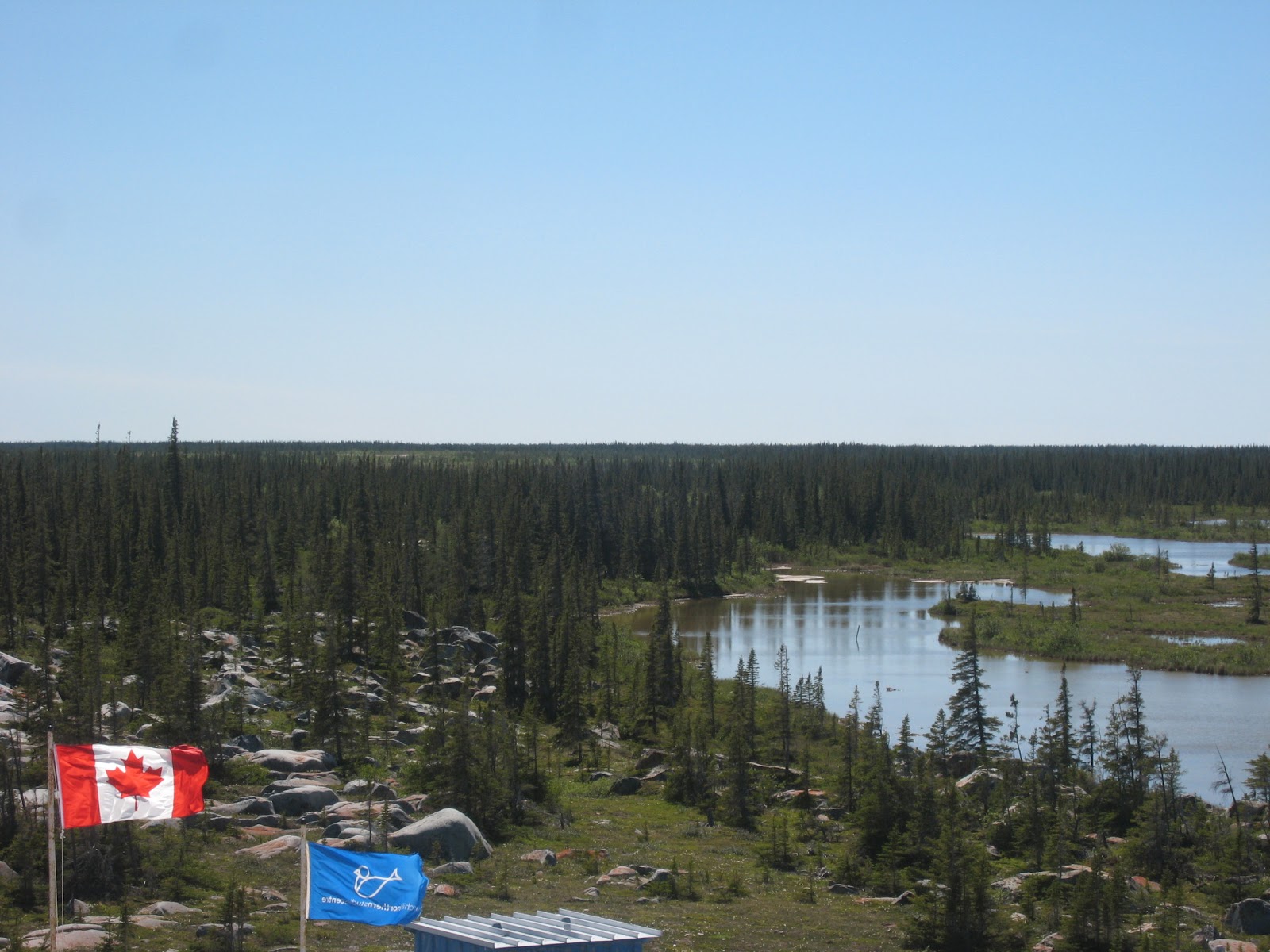 |
| View from the plane |
 |
| Tundra Ground Cover |
I
came to the subartic to esape the summer heat and so far, its been F'in
hot (80-90F) and bug ridden (no-see-ums, mosquitos, black flies and
horse flies all competing to get some blood). I have to say that this is
nothing like I had imagined. On a cursory look, the landscape seems all
the same. Ponds interspersed with low vegetation, and some random clumps
of pine trees.
 |
| zoomed in ground cover |
If you google earth Churchill, Manitoba - you will see that the facility (churchill northern studies center) where I live and volunteer as a research/field assistant is actually 25km from town - down some dirt road in the middle of nowhere.
Without my own car, I am mostly confined
to the lab unless I am checking on experimental plots to
collect data. Our mode of transportation has been ATVs
and we carry a shotgun, case we are attacked by random polar bears.
The bears of Churchill are pretty unique because they are one of the few populations that come onto land when the sea ice melts during the summer time. Because they depend on ice for their food source (where they wait for seals to pop their heads up breathing holes - to then rip the poor suckers out of the water), they basically don't eat June-Oct. Polar bears overheat easily. So they come to land to "hibernate", where their metabolism drops significantly (to reduce their energy intake and heat output). They basically wander in a torpor as if sleep walking, or take naps in ditches. Running into one can still turn out pretty ugly - imagine dealing with a hot, hungry, cranky bear - so we avoid them at all costs.

They bumble around land waiting for the ice to form again in October (tourist season here), and then congregate on shore to walk over the ice towards the north. These polar bears are very used to humans and are pretty curious having no issues with walking through town or approaching people. They are considered a real danger here and are taken very seriously. Earlier this week, I got my firearm license and discovered how bad of a shot I am. Lets just hope that nobody's life depends on me using it.
So
far I have really enjoyed my experience
here. I work alongside the research coordinator which gives me a chance
to have my fingers in all ongoing projects versus the repetition of
always working on the same experiment. I also get to have a better
understanding of the administrative side of running a nonprofit
facility. Visiting researchers come here to either study tundra
biodiversity, climate change related topics or fluxes in the
electromagentic field of the earth and the aurora borealis. I am flooded
with interesting info on a daily basis and get to see the equipment
they use to measure these factors.
My boss is a just-do-it type of gal: If there is a problem, go into the garage to scavenge for tools and parts, and rig something up. Take this shotgun apart, clean and oil the insides, and be ready to hit the range this afternoon. Go rake the shit in the compost toilet bin and make sure to aerate the worms...
I spend 50% of my time out in the field collecting data and dodging the bugs. At dinner, I get to network with other researchers and pepper them with questions about their on-going projects. I love being in a community of scientist that spend their time nerding out in nature! I think that this is the reason that I return to volunteering gigs in different labs as often as I can. What better way is there to deeply understand the landscape that surrounds us?
 |
| the calm before the storm... |
The highlight of my time here so far, has been a recent kayaking trip to check out the beluga whales where the river meets Hudson bay. It was a beautiful glassy evening, easy paddle in the huge river. The whales were frolicking everywhere. Some would glide under the kayak and roll onto their sides for a better look. They were so curious and playful. The night would have been perfect had the weather not suddenly changed on us. The wind kicked up and the water got real choppy. We were in the middle of a 3mile wide river with the current and wind now going against us. No matter how hard I would paddle, it didn't feel like we were moving at all. I got pretty scared. We were a tiny speck of color over freezing gray water. If a wave tipped the boat, it would be game over. No one would be able to reach us before hypothermia setting in. We paddled forever. I was wet, cold, exhausted and demoralized with the slow progress. When we finally got close to shore, my relief was replaced by panic as I spotted a giant polar bear staring at us standing on its hind legs. I nearly crapped my pants. This is not how I wanted my first bear sighting to be.We called park services that quickly responded by scaring it into the water (great, now we don't know where it is) and then we scrambled on to shore to the safety of our cars.
 Living and working on the tundra has been a
novel experience. Its reassuring to know that there are large parts of
this planet that still remain wild and mostly unpopulated... and so
close to home!
Living and working on the tundra has been a
novel experience. Its reassuring to know that there are large parts of
this planet that still remain wild and mostly unpopulated... and so
close to home!


